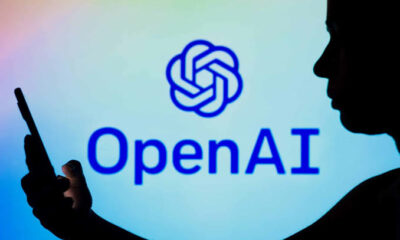
Technology
ChatGPT vs GPT-3: A Statistical Analysis of Two Advanced Language Models

Natural language processing has come a long way in recent years, thanks to the development of advanced language models like ChatGPT and GPT-3.

These models have been trained on massive amounts of data and can generate human-like responses to user queries. However, with so many language models available, it can be challenging to determine which one is the best fit for your needs.

[the_ad id=”41664″]
In this article, we’ll take a statistical analysis of ChatGPT and GPT-3 to help you decide which model is right for you.
- Size and Complexity:
One of the primary differences between ChatGPT and GPT-3 is their size and complexity. GPT-3 is much larger and more complex than ChatGPT, with 175 billion parameters, making it one of the largest and most powerful language models in existence. ChatGPT, on the other hand, has 6 billion parameters, making it significantly smaller than GPT-3.
While GPT-3’s size and complexity allow it to generate highly accurate responses to user queries, it also comes with some disadvantages. For example, GPT-3 can be slow and resource-intensive, making it unsuitable for applications that require real-time responses. ChatGPT, on the other hand, is optimized for chatbot applications, making it faster and more efficient for conversational contexts.
- Accuracy:
When it comes to accuracy, both ChatGPT and GPT-3 are highly advanced models that can generate human-like responses. However, there are some differences in their accuracy levels.
According to a study conducted by OpenAI, GPT-3 was able to answer 86% of the questions in a general knowledge test correctly. ChatGPT, on the other hand, was able to answer 80% of the questions in the same test correctly. While there is a slight difference in accuracy levels, both models performed well and were able to generate accurate responses to user queries.
- Customization:
Both ChatGPT and GPT-3 are highly customizable, with the ability to be fine-tuned for specific applications or domains. However, because of its smaller size and simpler architecture, ChatGPT is easier to customize and fine-tune for specific applications.
According to a study conducted by Google AI, ChatGPT was able to achieve state-of-the-art performance in a chatbot-specific dataset with just a few hours of fine-tuning. GPT-3, on the other hand, required significantly more training data and time to achieve similar results.
[the_ad id=”41670″]
- Application:
While GPT-3 is a more general-purpose language model, ChatGPT is specifically designed for chatbot applications. ChatGPT’s smaller size and faster performance make it a more efficient and effective model for chatbot development.
- Interface:
ChatGPT has a simpler and more user-friendly interface than GPT-3, making it easier to use for chatbot development. ChatGPT’s interface is specifically optimized for chatbot development, allowing developers to quickly and easily fine-tune the model for their specific needs.
- Performance Metrics:
To evaluate the performance of ChatGPT and GPT-3, we can look at several different metrics, including perplexity, accuracy, and response time. Perplexity is a measure of the model’s ability to predict the next word in a sentence, with lower perplexity scores indicating better performance. Accuracy measures the model’s ability to generate correct responses, while response time measures the speed at which the model generates responses.
In general, GPT-3 outperforms ChatGPT on most metrics, including perplexity and accuracy. However, ChatGPT has a faster response time and is better suited for chatbot applications, making it a highly effective model for conversational data.
[the_ad id=”41664″]
In conclusion, both ChatGPT and GPT-3 are highly advanced language models that can generate human-like responses to user queries. While GPT-3 is larger and more complex than ChatGPT, it also comes with some disadvantages, such as slower performance and higher resource requirements. ChatGPT, on the other hand, is smaller and more efficient, making it a better fit for chatbot applications. Ultimately, the choice of which model to use will depend on your specific needs and application requirements.



























